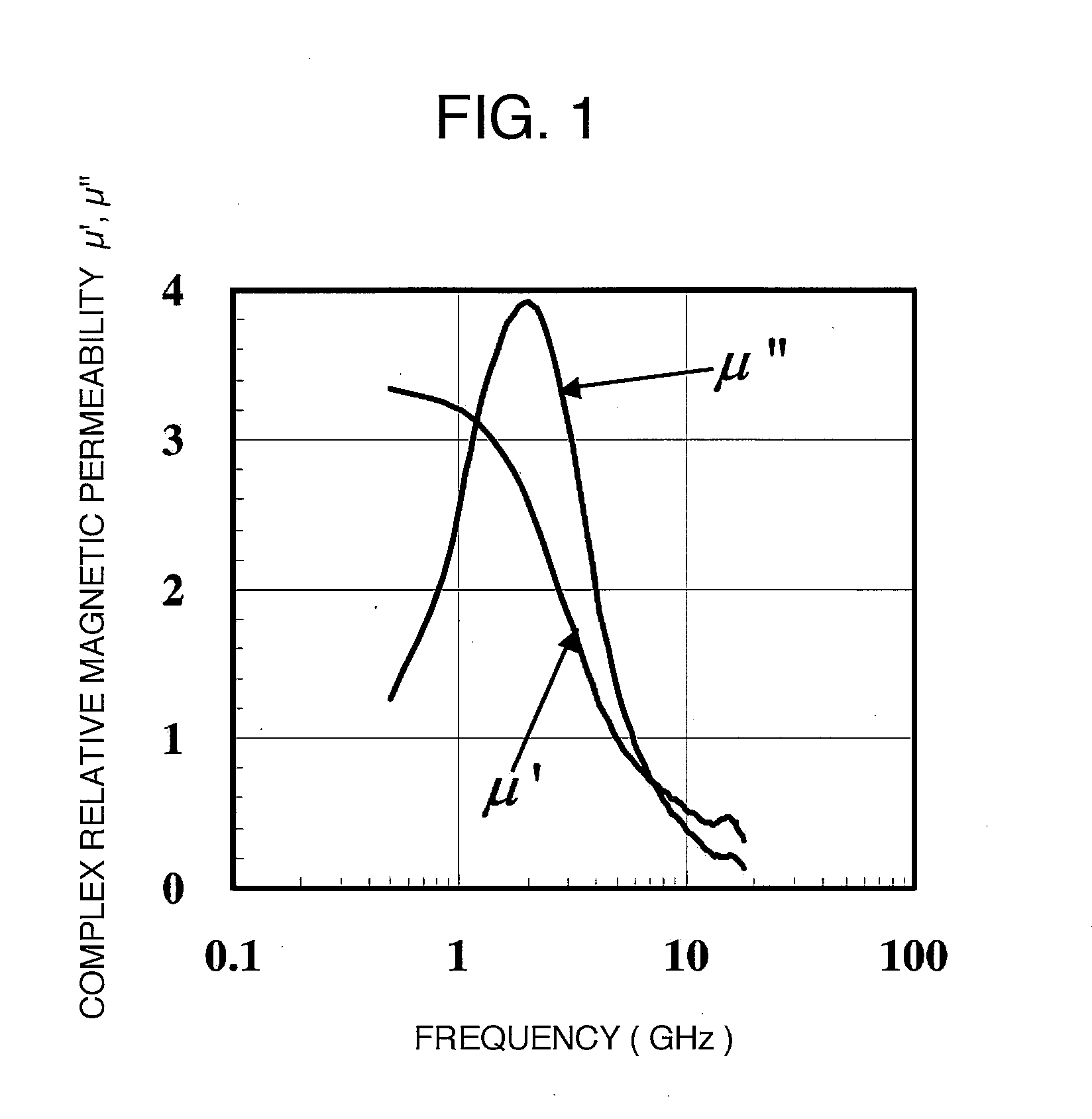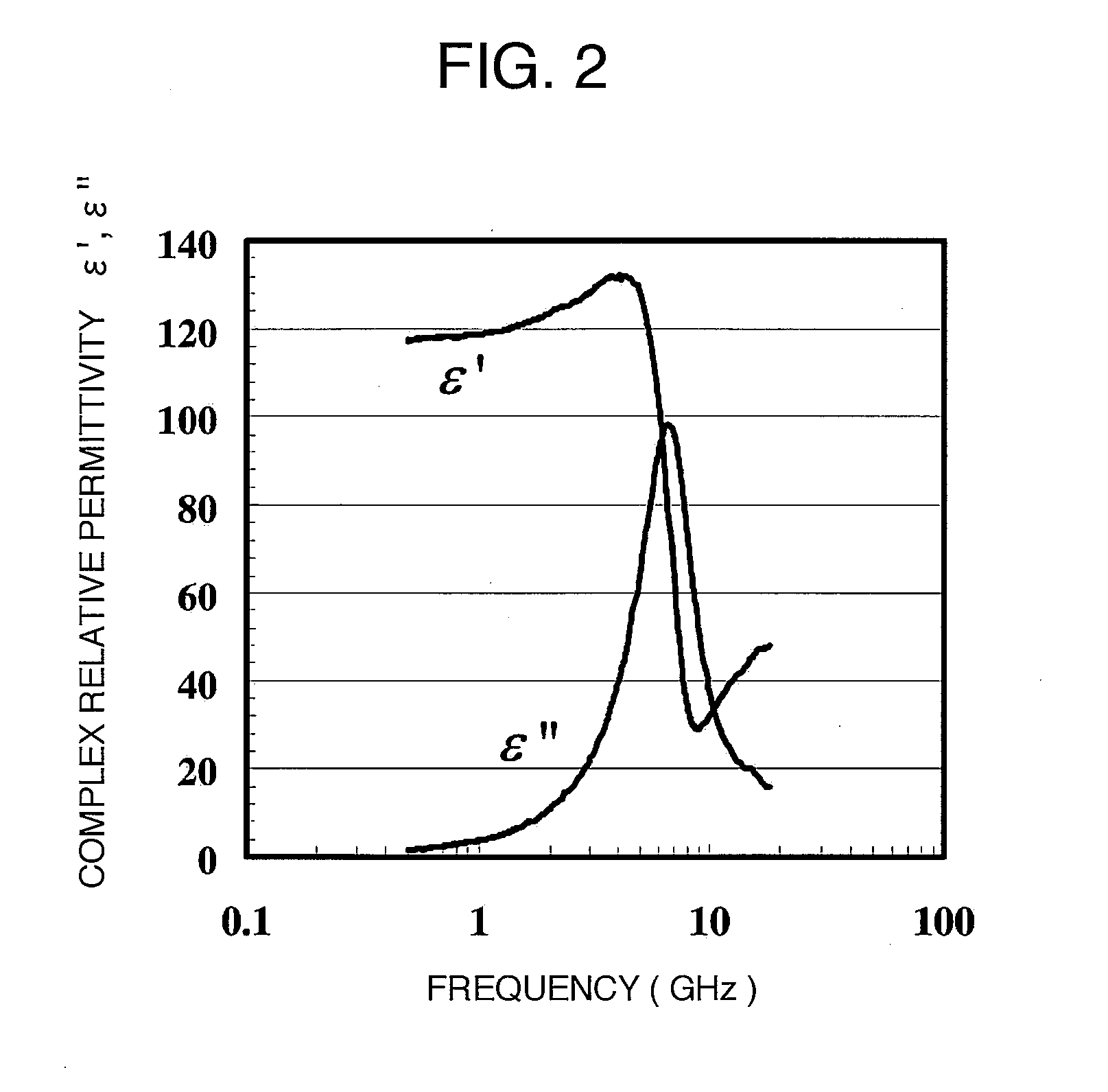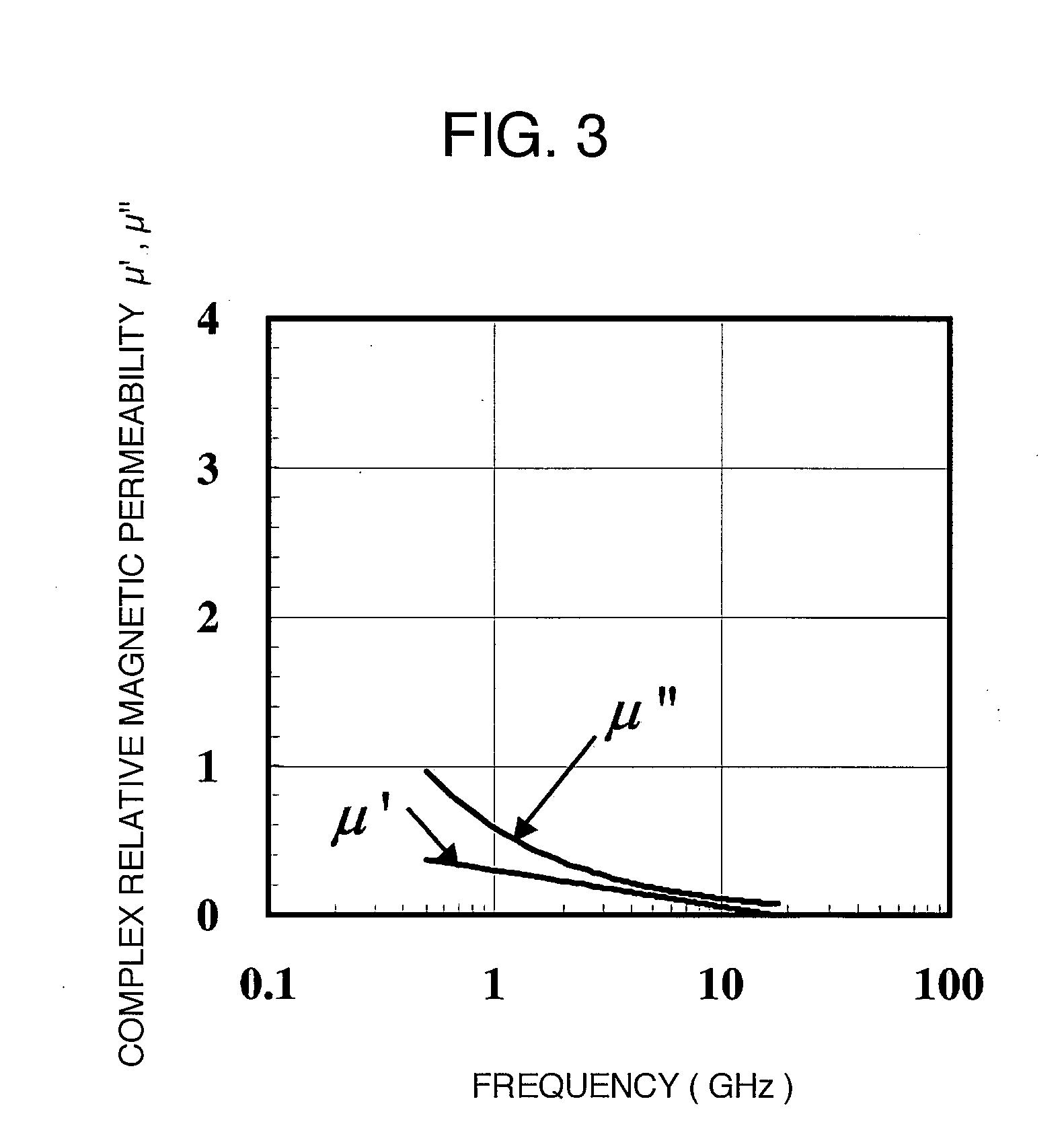Magnetic material for high frequency wave, and method for production thereof
a high-frequency wave and magnetic material technology, applied in the field of magnetic material for a high-frequency wave, can solve the problems of difficult utilization of ferrites, difficult to cope with problems, and environmental degradation caused by electromagnetic waves released outwardly from high-frequency devices, and achieves small eddy current loss and high magnetic permeability.
- Summary
- Abstract
- Description
- Claims
- Application Information
AI Technical Summary
Benefits of technology
Problems solved by technology
Method used
Image
Examples
example 1
[0266]Nd of 99.9% in purity and Fe of 99.9% in purity were melted and mixed in an arc melting furnace in an argon gas atmosphere and then, an ingot of 5 mm in thickness was fabricated by the drop cast method. The ingot was annealed in an argon atmosphere at 1,030° C. for 20 hours, slowly cooled, and subjected to a surface polishing to prepare a raw material alloy having a composition of Nd11.6Fe88.4.
[0267]The raw material alloy was pulverized by a jaw crusher, and then further pulverized by a cutter mill in an argon atmosphere, and the grain size was regulated by a sieve to obtain a powder of approximately 60 μm in average grain diameter. The Nd—Fe raw material alloy powder was charged in a horizontal tubular furnace, and subjected to a heat treatment at 420° C. in a mixed gas flow having an ammonia partial pressure of 0.35 atm and a hydrogen gas partial pressure of 0.65 atm for 1 hour to adjust the alloy powder into an Nd10.1Fe76.7N13.2 composition of approximately 30 μm in average...
example 2
[0279]The course powder of the Nd10.1Fe76.7N13.2 composition obtained in Example 1 was subjected to a rotation ball mill in argon having an oxygen partial pressure of 1%, surface-treated in a ferric chloride solution of pH 6.2, and thereafter subjected to a surface oxidation treatment under pH regulation to obtain a rare earth-iron-nitrogen (-hydrogen-oxygen) based magnetic material of Nd8.0Fe60.8N10.6H7.8O12.8 having an average grain diameter of 6 μm.
[0280]This material was blended with 12% by mass of an epoxy resin, molded in a static magnetic field of 1.2 MA / m (uniaxial magnetic field orientation) at a molding pressure of 1 GPa into a size of 10×5×1.3 mm, and cured at 150° C. for 2 hours. The obtained molding had a density of 5.2 and a volume fraction of the magnetic material of 62% by volume.
[0281]The maximum value of the imaginary term of the complex relative magnetic permeability in the case where the magnetic field orientation direction of the rare earth-iron-nitrogen based m...
example 3 and 4
[0283]Nd of 99.9% in purity and Fe of 99.9% in purity were melted and mixed in a high frequency melting furnace in an argon gas atmosphere and then, annealed in an argon atmosphere at 950° C. for 100 hours, slowly cooled, and subjected to a surface polishing to prepare a raw material alloy having a composition of Nd10.5Fe89.5.
[0284]The raw material alloy was pulverized by a jaw crusher, then pulverized by a pin mill in an argon atmosphere, and thereafter, the grain size was regulated by an acoustic classifier to obtain a powder of 50 μm in average grain diameter.
[0285]This Nd—Fe raw material alloy powder was charged in a horizontal tubular furnace, subjected to a heat treatment at 420° C. in a mixed gas flow having an ammonia partial pressure of 0.35 atm and a hydrogen gas partial pressure of 0.65 atm for 2 hours, and then annealed at 400° C. in argon gas for 30 min to adjust the powder alloy into an Nd9.1Fe77.3N13.6 composition of approximately 25 μm in average grain diameter.
[0286...
PUM
| Property | Measurement | Unit |
|---|---|---|
| Temperature | aaaaa | aaaaa |
| Fraction | aaaaa | aaaaa |
| Fraction | aaaaa | aaaaa |
Abstract
Description
Claims
Application Information
 Login to View More
Login to View More - R&D
- Intellectual Property
- Life Sciences
- Materials
- Tech Scout
- Unparalleled Data Quality
- Higher Quality Content
- 60% Fewer Hallucinations
Browse by: Latest US Patents, China's latest patents, Technical Efficacy Thesaurus, Application Domain, Technology Topic, Popular Technical Reports.
© 2025 PatSnap. All rights reserved.Legal|Privacy policy|Modern Slavery Act Transparency Statement|Sitemap|About US| Contact US: help@patsnap.com



